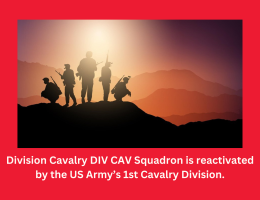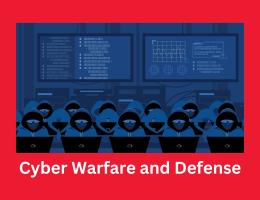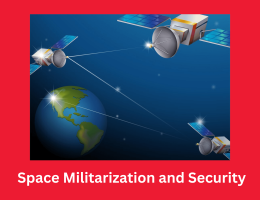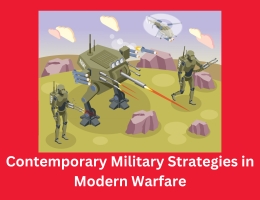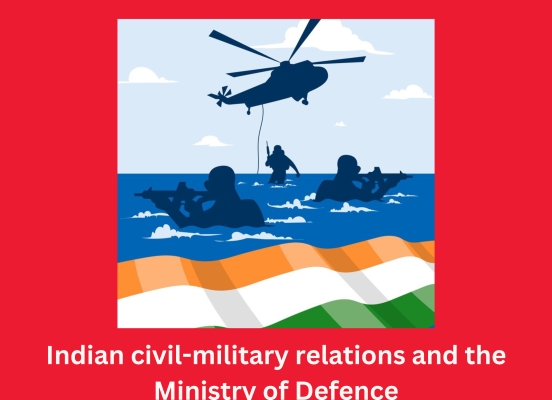
Indian civil-military relations and the Ministry of Defence
- By admin --
- Sunday, 07 Apr, 2024
The Ministry of Defence of India and its impact on civil-army relations are tested in this text. It contends that civilian manipulate over the army has been the primary emphasis of the Defense Ministry's strategic goal up until noticeably these days. The Indian navy's efficacy become hampered via the institutional framework of civilian governance that ensued. This changed into resulting from some of factors of the state's civilian manage paradigm, inclusive of military autonomy, bureaucratic procedures underpinning civil-navy members of the family, and a loss of civilian revel in. The management is presently imposing measures to boost army might in recognition of those problems. It is broadly speaking accomplishing this by means of bringing in military information at the cupboard stage. However, it's miles uncertain if this will be successful and might absolutely change India's civil-military dating. Philosophically talking, This article looks on the probably dangerous outcomes of getting a ministry run basically by way of civilians and emphasizes the value of revel in in boosting military overall performance and manipulate.
In India, the MoD and civilian control
The strategic purpose that underpins the Ministry of Defence might be a treasured conceptual device in know-how its mission. As a direct intuitive understanding of the future direction of the company that allows personnel to focus their efforts on accomplishing firm desires, strategic reason is a properly-advanced notion in management literature.Note The Ministry of Defence in India has frequently centered on civilian manipulate over army effectiveness as a strategic aim. Indeed, there were sporadic projects to prioritize efficacy above manage, as I will talk later. These endeavors have been aberrant, although, and the ministry's primary intention has always been control. Such a method might have made feel in the first decades after independence, all through which era democracy can nevertheless be insecure. Though positive civil freedoms were suspended throughout the Emergency (1975–1977), democracy and civilian governance were possibly on a good deal stronger footing after that. Despite this, the strategic purpose, organizational structure, and functionality of the ministry remained basically intact due to course dependency, bureaucratic politics, and India's administrative establishments.
1947–1962: A framework is set up
Even even though they lacked revel in, India's navy and civil leaders have been suddenly promoted to high administrative posts in 1947, the year of independence. The Ministry of Defence become a nascent entity missing a clear strategic plan. In contrast, the army carried over from British colonial management strategies that located little emphasis on democratic oversight or requirements. The Ministry of Defence has to rise up to the navy on the way to create democratic authority. This brought about severe conflict between H.M. Patel, the protection secretary (1947–fifty three), and General K.M. Cariappa, the primary Indian chief of navy team of workers (1949–53). While the latter become adamant that democratic governance required the military to make its guidelines via civilian officers in the ministry, the previous disliked what he saw as unjustified civilian meddling. Jawaharlal Nehru, the country's first prime minister, became aware of these tensions and took a corporation stand on want of the citizens. Therefore, Nehru's steadfast backing of the defense minister and other civilian government was crucial in establishing civilian It helped that he had unequalled and authentic political authority and had ruled for 17 years in a row.
1963–1998: The schism grows
After the boundary dispute with China, India fought greater wars, one with Pakistan, in much less than ten years. The navy movements of Pakistan in Kashmir sparked the warfare of 1965. The Indian army became granted a remarkable deal of operational liberty at some point of this conflict, and residents evaded acting to meddle in politics.Footnote As a result, force employment changed into by chance negatively impacted, most substantially in relation to jointness. To their credit, however, residents took note of this revel in and, earlier than to the battle in Bangladesh in 1971, became increasingly more worried in quietly education the militia for battle.Note Nonetheless, the notion of wonderful spheres turned into solidified with the aid of India's fulfillment on this battle and the popular narrative that this changed into made feasible by using the army's overall autonomy. From now on, the anticipation of Among military leaders, entire navy autonomy have become a catchphrase.
1999–2019: Implementing and debating reforms
India and Pakistan fought what became known as the Kargil conflict within the summer time of 1999. The Kargil evaluate committee and the Group of Ministers Committee are two massive reform initiatives that were created because of the general public outrage over the struggle, which bowled over Indian squaddies. These committees mentioned the subjects at the coronary heart of this text, such as the mixing of the ministry and challenge know-how, and that they had a wide mandate. But as may be seen under, no matter the flaws being identified, actual reform became thwarted via resistance from the bureaucracy both army and civilian.
The military and forms
Surprisingly little studies has been finished at the characteristic of civilian officials within the ministries of defense. Academics and politicians both locate the role of civilians in the Pentagon to be understudied and poorly understood, notwithstanding the United States having highly nicely-advanced centers for strategic studies.Note While these bureaucrats are not similar to political leaders, they nevertheless affect protection techniques and civil-army relations in a significant, if every so often underappreciated, manner.

